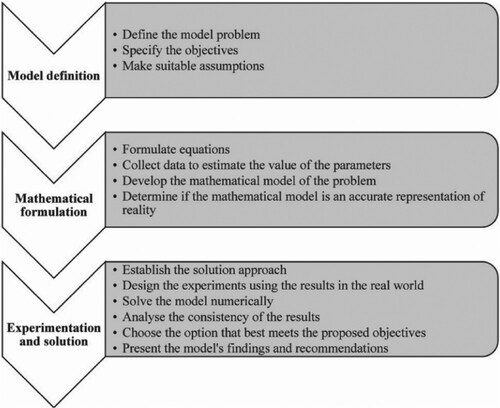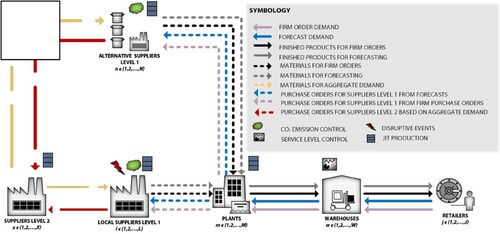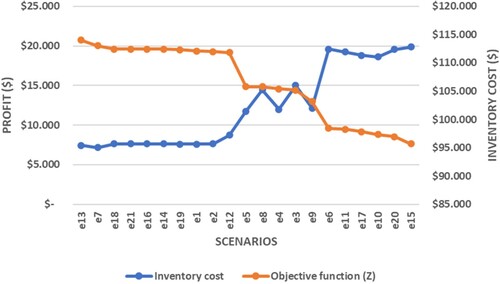Figures & data
Table 1. Survey of the papers that address LSCP through mathematical programming models.
Figure 1. LSCP 4.0 modelling and experimentation methodology.

Figure 2. LSCP 4.0 design.

Table 2. Notation of the LSCP 4.0 model.
Table 3. Design of the experiments for each SC level.
Table 4. Objective function values and runtime per instance.
Figure 3. Relation between inventory cost and profits for the medium-sized problem.

Table 5. Computational efficiency.
Table 6. Bullwhip effect measures.
Figure 4. Supply chain net inventory amplification in scenario e7.

Supplemental Material
Download MS Word (181.7 KB)Data availability statement
The authors confirm that the data supporting the findings of this study are available in the article and in Appendix.
